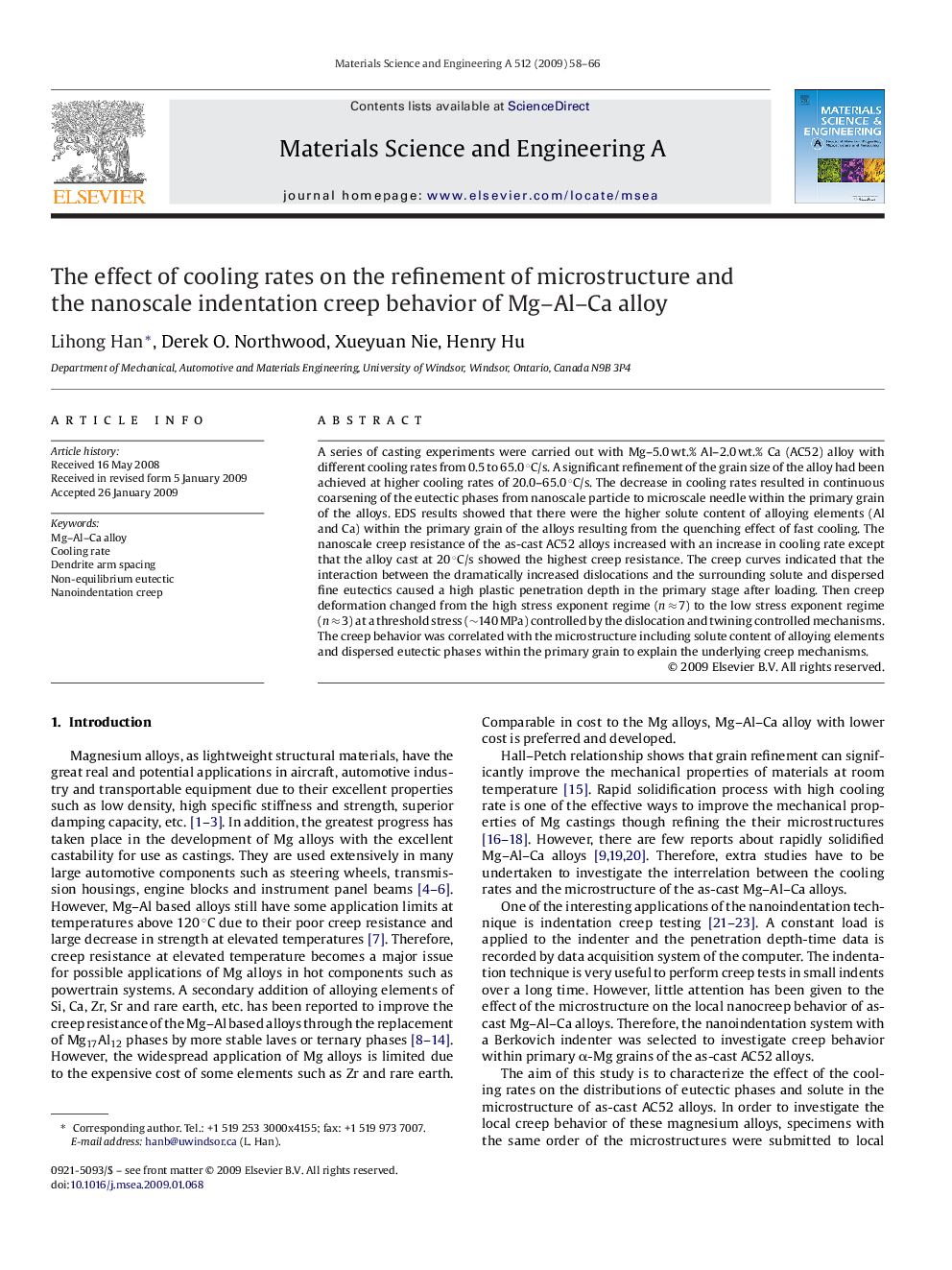| Article ID | Journal | Published Year | Pages | File Type |
|---|---|---|---|---|
| 1580925 | Materials Science and Engineering: A | 2009 | 9 Pages |
Abstract
A series of casting experiments were carried out with Mg-5.0 wt.% Al-2.0 wt.% Ca (AC52) alloy with different cooling rates from 0.5 to 65.0 °C/s. A significant refinement of the grain size of the alloy had been achieved at higher cooling rates of 20.0-65.0 °C/s. The decrease in cooling rates resulted in continuous coarsening of the eutectic phases from nanoscale particle to microscale needle within the primary grain of the alloys. EDS results showed that there were the higher solute content of alloying elements (Al and Ca) within the primary grain of the alloys resulting from the quenching effect of fast cooling. The nanoscale creep resistance of the as-cast AC52 alloys increased with an increase in cooling rate except that the alloy cast at 20 °C/s showed the highest creep resistance. The creep curves indicated that the interaction between the dramatically increased dislocations and the surrounding solute and dispersed fine eutectics caused a high plastic penetration depth in the primary stage after loading. Then creep deformation changed from the high stress exponent regime (n â 7) to the low stress exponent regime (n â 3) at a threshold stress (â¼140 MPa) controlled by the dislocation and twining controlled mechanisms. The creep behavior was correlated with the microstructure including solute content of alloying elements and dispersed eutectic phases within the primary grain to explain the underlying creep mechanisms.
Related Topics
Physical Sciences and Engineering
Materials Science
Materials Science (General)
Authors
Lihong Han, Derek O. Northwood, Xueyuan Nie, Henry Hu,
